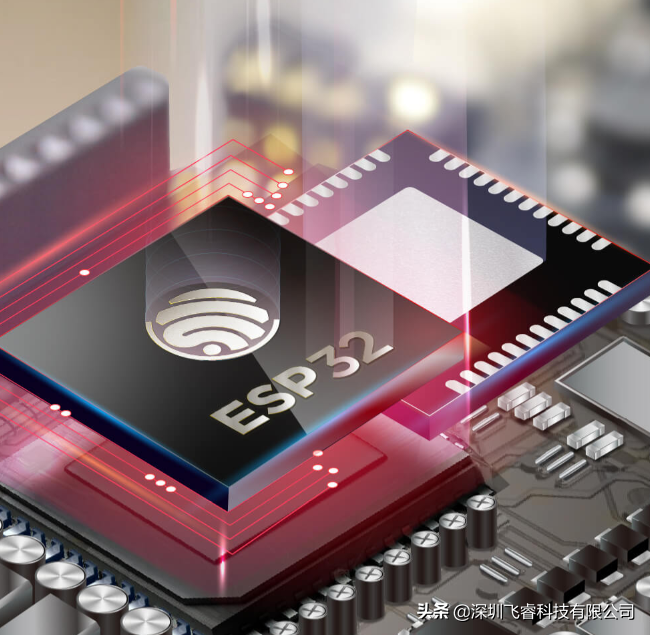The continuous maturity of wireless technology plays a vital role in the development of the Internet of Things, and it has become easier and safer to achieve "Internet of Everything and Internet of Things".
Bluetooth technology and WiFi technology are both wireless communication network standards, can achieve wireless segment distance communication, and both work in the ISM 2.4GHz public frequency band, but the difference is that WiFi technology also has a dual-band WiFi module that supports working in the 5GHz band.

ESP32 is a single-chip solution integrating 2.4GHz Wi-Fi and Bluetooth dual-mode, using ultra-low power consumption 40nm process, with ultra-high RF performance, stability, versatility and reliability, as well as ultra-low power consumption, to meet different power consumption needs, suitable for a variety of application scenarios.
In the low-power IoT sensor Hub scenario, esp32 can be woken up periodically under certain conditions. The low duty cycle can greatly reduce the energy consumption of the ESP32 chip. The output power of the RF power amplifier can also be adjusted to achieve an optimal balance between communication distance, data rate, and power consumption.
The 2.4GHz transmitter modulates the quadrature baseband signal to a 2.4GHz RF signal, using a high-power complementary metal-oxide semiconductor (CMOS) power amplifier to drive the antenna.
Digital calibration further improves the linearity of the power amplifier, allowing 802.11b wireless transmission power to reach +20.5dBm and 802.11n wireless transmission power to +18dBm.
What is transmit power? The transmit power is the signal strength emitted by the equipment used to the base station. The transmit power of a WiFi module is the energy in a given frequency band range, usually measured or measured in gain (dBm).
The general transmission power of the wireless WiFi module is about +18dBm, and the transmission power of the high-power WiFi module is about +28dBm. The transmit power of the WiFi module determines the signal strength emitted by the WiFi module, and it will also directly affect the transmission distance of the WiFi module.
The ESP32 combines antenna switches, RFbalun, power amplifiers, receive low-noise amplifiers, filters, power management modules, and more. The ESP32 requires very few peripherals to achieve powerful processing performance, reliable security performance, and Wi-Fi & Bluetooth capabilities.
What is receive sensitivity? Receiver sensitivity refers to the minimum signal level that a receiver can detect under conditions that require a signal-to-noise ratio before a receiver demodulator. Reception sensitivity is a parameter that characterizes the reception performance of the object to be measured, the higher the reception sensitivity of the WiFi module, the more useful signal it receives, and the greater its wireless coverage.
As the transmission power and reception sensitivity of the wireless coverage range are affected by the transmission distance of the WiFi module, it is necessary to ensure that its value is within the normal range.
Designed for mobile devices, wearable electronics, and IoT applications, the ESP32 features the industry's highest levels of low-power performance, including fine-resolution clock gating, power-down modes, and dynamic voltage regulation.
Esp32 can be used as a standalone system to run applications or as a slave device to the host MCU, providing Wi-Fi and Bluetooth capabilities via SPI/SDIO or I2C/UART interfaces.
Embedded WiFi module, 32-bit microcontroller, built-in WiFi driver and protocol, the interface for the general MCU interface such as UART, etc., suitable for all kinds of smart home or smart hardware single products.
With the development of the Internet of Things smart home market, the shipment of wireless WiFi modules has increased significantly, and it is widely used in smart gateways, smart homes, smart home appliances, remote control and other fields to build wireless home smart systems, realize APP control and cloud docking.
The ESP32 is stable and operates over the –40°C to +125°C temperature range. The integrated auto-calibration circuit enables dynamic voltage regulation, eliminating defects in external circuitry and adapting to changes in external conditions.
The WiFi module allows application manufacturers to quickly and easily realize the network intelligence of their own products, and realize interconnection with more smart homes. With the increasing development of wireless communication technology of the Internet of Things, WiFi has a large network coverage, convenient movement, fast transmission speed, simple installation, health and safety and other advantages, which have been widely used in life.